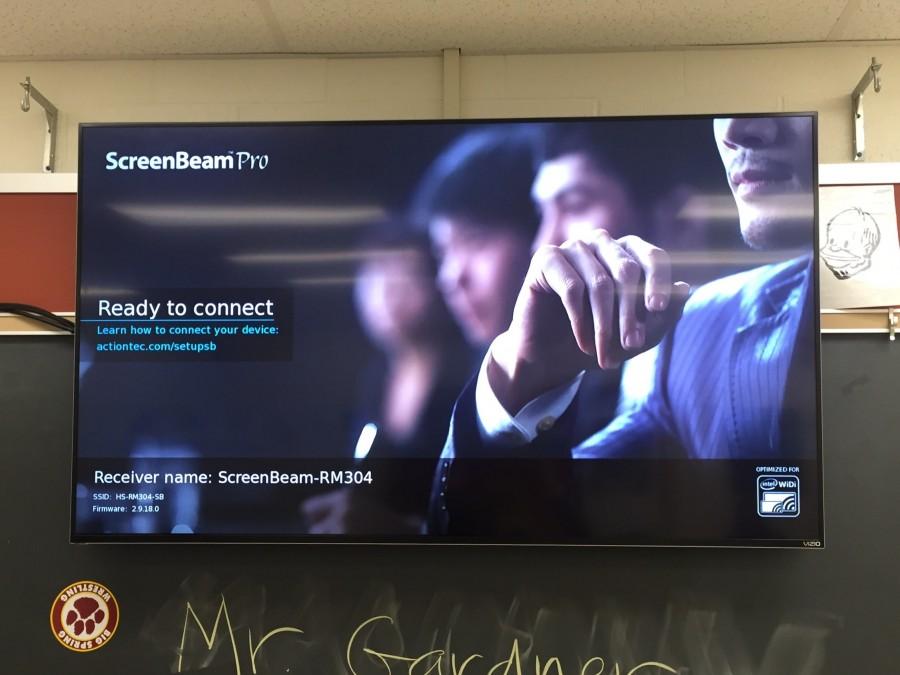Teachers test SmartBoard alternatives
April 22, 2016
A week prior to Easter break, Big Spring students began to see a change in the classroom; namely Tim Kireta’s classroom. As handymen were seen exiting and entering the history hallway, many began to wonder what strange unknown event was occurring in room 304. And, as news got out that Kireta’s SmartBoard had been removed and replaced with a large screen high-definition television, students were left with many unanswered questions.
The new televisions that are being installed in select classrooms throughout the school are a part of a new program the Big Spring Tech Department, alongside Questeg, is implementing called “The Next Generation Classroom.” This idea came about when current well-used SmartBoards began to have technical difficulties due to age. As the department searched for new alternatives, they began to see a dramatic difference in the price between Smartboards and various other options. “When replacing technology you have to think about long-term and replacement costs,” said Kireta. “That’s where the Hi-Def TV’s and integrated technology come in.” The HD TV’s are not the only thing being tested out in the classroom, but also LanSchool software, a permanent desktop tower instead of the docking laptops, and Lenovo Yoga Laptops. These items in combination will be used to create the ultimate learning experience through live-streaming and monitoring capabilities.
One issue that has arisen amidst all of these technology updates, has been the Chromebook’s lack of hard-drive space. “We may be looking into replacing the Chromebooks with something a little more powerful for students in the future,” said Kireta. Another alternative they are looking into is Chromecast, a media streaming device that much like the student laptops is Google based and compatible with Chromebooks. In addition, the use of traditional blackboards have become much more popular due to the inability to easily write on the new screens. However, with the negatives also come the positives, and clearer pictures and sound seem to be something Kireta is thoroughly enjoying as he tests out these devices.
One popular misconception that has been circulating since the implementation of this technology, particularly LanSchool, is that the program could be used to infringe on students’ privacy. “LanSchool is really just supposed to project students computers onto the screen for academic sharing purposes, not monitor students laptops.” said Kireta. Tech Director Brandie Shatto was also able to provide some insight into some of the questions students have raised through her involvement with this project. “Our goal, as a district, is first and foremost to provide students with the best educational experiences possible. With that, we see collaboration as a part of that goal. One of the purposes of this pilot is to see if we can effectively and efficiently allow the teacher to be mobile around the classroom, while still controlling the board, and also to allow students to share content to the board. We want our students to be able to interact with content and the teacher using the technology we have available.” said Shatto.
As for whether or not this trial run has truly proven that the new technology has been effective, Junior Briana Stouffer and student of Kireta’s believes there has not been much of a change in the classroom with the installation of this technology, other than inability to write on the screens anymore. As the Tech Department and Questeq continue to pilot new technology, only time will tell if it has a lasting effect on students’ learning through the positive impact they are trying to make. As technology testing continues to change, Paw Print will keep you updated on these changes.
